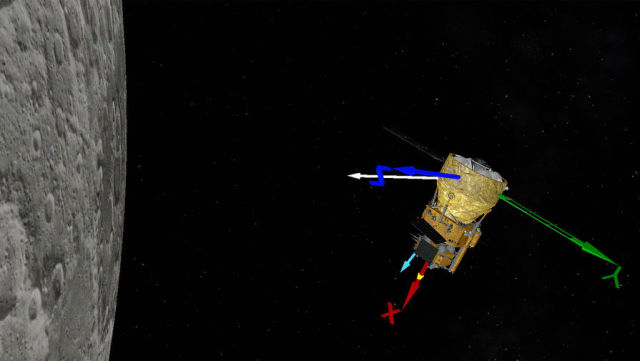China's Chang'e-5 probe landed gently on the moon's surface
The Chinese Chang'e-5 spacecraft made a soft landing on the surface of the moon. In the near future, it will start drilling the ground to deliver samples to Earth. If everything goes smoothly, China will become the third country to deliver a piece of the moon to Earth.
The Chinese spacecraft Chang'e-5 made a soft landing on the surface of the moon. This was reported by the Chinese state TV channel CGTN.
Chang'e-5 successfully landed on the other side of the moon, " the TV channel said in a statement, citing the Chinese national space administration.
#BREAKING #China 's Chang'e-5 successfully lands on moon https://t.co/fKuSDnfV0v- CGTN (@CGTNOfficial) December 1, 2020
Despite the fact that the Chinese authorities kept secret the estimated time of key operations of the mission, earlier leaks were made in the media, which indicated that the landing of the device is scheduled for Tuesday evening at 18.13 Moscow time.
The day before, the module sent to the moon made two braking maneuvers, during which it entered orbit around the moon at an altitude of 400 kilometers, then dropped to two hundred kilometers. After that, on November 30, the lander separated from the orbital module and began an independent flight.
The mission was launched on November 23 from a spaceport in China's Hainan province using a Changzheng-5 heavy launch vehicle.
"The spacecraft is working perfectly, communication with ground services is normal," representatives of the Chinese national space administration said earlier.
The expedition plans to drill a small well on the surface of the moon and take about two kilograms of soil for research. After that, the return module will launch from the lunar surface, dock with the orbital module and go to Earth, where it will land by parachute in the Chinese province of Inner Mongolia. If all goes well, China will become the third country, which will be able to deliver to Earth samples of lunar material.
Thanks to the Apollo missions, 382 kilograms of various lunar rocks were delivered to Earth. The USSR was able to deliver about three hundred grams, most of which are stored in the Institute of geochiology of the Russian Academy of Sciences. The last Soviet spacecraft was sent to the moon in 1976, so the Chinese mission will be the first in 44 years to deliver lunar material to Earth.
Chinese scientists are interested in a previously unexplored area on the moon. Landing was executed on Rumker Peak - a mountain peak of volcanic origin in the North-Western part of the visible side.
According to scientists, this mountain peak, named after the German astronomer Karl Rümker, is the latest evidence of volcanic activity on the moon, so the samples collected there should be the youngest in age of all delivered to Earth. The study of these materials is important not only for understanding the Geology of the moon, but also for studying other bodies in the Solar system in the future.
According to the plan, work on the moon should take about three days to keep the electronics on Board the lander from freezing. Material collection will begin immediately after landing. With the help of a special drill, the probe will go two meters deep and make a soil fence.
Chang'e-5 is another stage of the Chinese lunar program, which is named after the moon goddess and began in 2007. According to experts, there are currently seven Chinese vehicles on the moon and its orbit, including landing stations, a working Rover and orbiters.
Pavel Kotlyar

